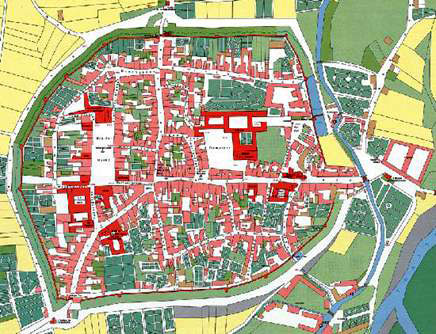http://www.daviddarling.info/encyclopedia/I/isobar.html
Isobars connects points of equal pressure at the Earths surface or at a constant height above it. The atmospheric pressure is measured in millibars. The closer the isobars are, the stronger the winds will be and if the isobars are far apart, the winds will be lighter. Isobars are generally wrapped tightly around regions of low pressure (windy, wet and cloudy) but are apart around regions of high pressure (winds are light, breezy and calm). In areas of low pressure, wind flows counterclockwise, while in areas of high pressure, wind flows clockwise. Wind flows roughly parallel to the isobars.






